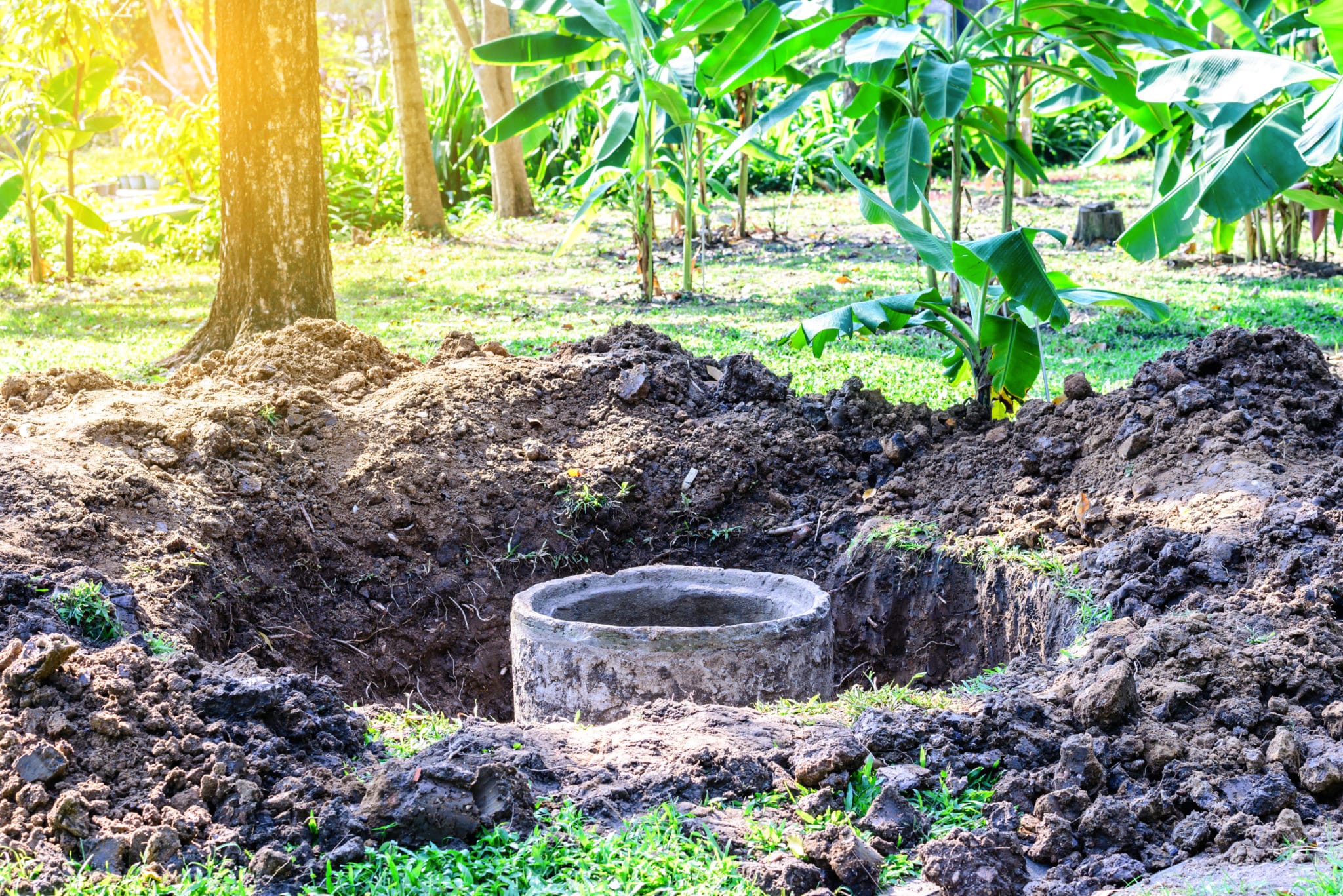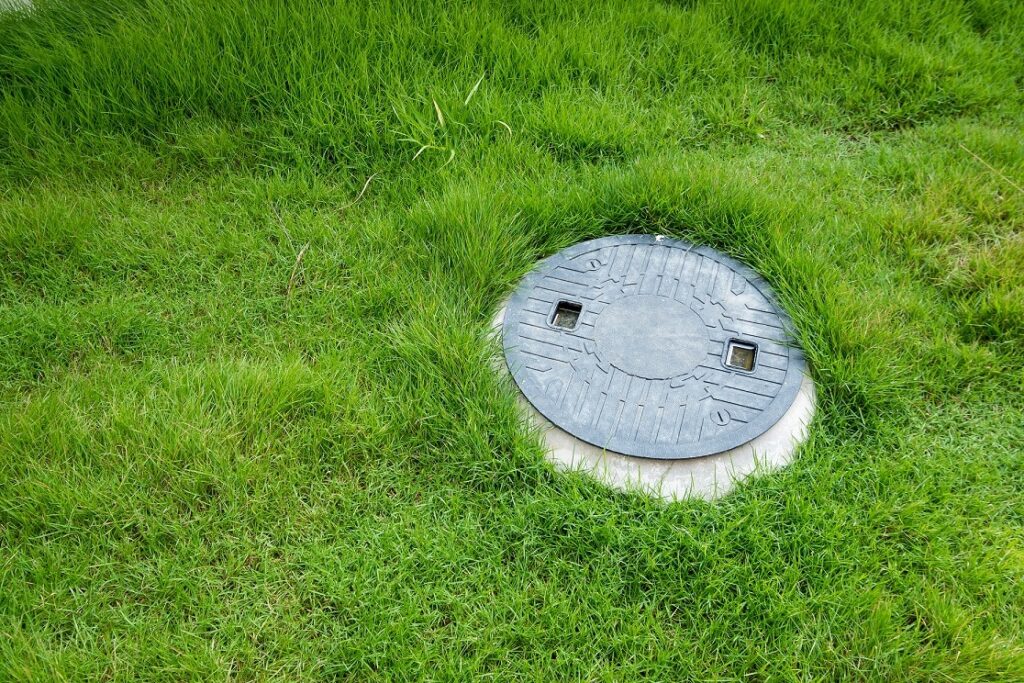
What Is a Bio Septic Tank?
A bio septic tank is a waterproof chamber where bacteria break down organic waste from wastewater without oxygen through anaerobic digestion. In biogas production, this chamber is also called a digester.
This sealed environment creates the ideal conditions for a series of chemical reactions, enabling the fermentation process to result in methane, carbon dioxide, and water.
Historically, septic tanks have been used for collecting and sometimes filtering wastewater in households that aren’t connected to the grid. In the last years, the system has been improved to permit biogas production and water recycling. It all happens thanks to an artificial process that mimics a natural phenomenon: the tank provides an environment where bacteria can digest organic waste and transform it into renewable energy.
In a bio septic tank, the process will generate biogas, usable water, and sometimes bio-fertilizer. This organic, nutrient-rich sludge can be used in the planting and growing process.
What’s different about bio septic tanks, and why sometimes a traditional septic tank isn’t the right choice? Let’s take a closer look.
Septic Tank vs. Bio Septic Tank – What Are The Differences?
Typically, septic tanks would accumulate the organic waste from domestic activities (primarily grey and black water), but they weren’t designed to support recycling or biogas production. Consequently, there’s no way to eliminate the sludge other than regular removal after the chemical reactions occur.
The traditional septic tanks are just a way to keep wastewater from ending in the environment: you have a container made of concrete, steel, plastic, or fiberglass that you have to empty regularly to avoid waste going directly to the landfill. While not ideal, many people have to rely on it, especially in rural areas and suburbs that don’t have the infrastructure for centralized sewage systems.
In the US alone, almost 25% of the population uses septic tanks, which can harm the environment in the long run, mainly because most of these systems don’t rely on sustainable solutions to manage wastewater. Worldwide, numbers are even more alarming — according to UN reports, over 3.5 billion people use toilets and sanitation systems that are poorly managed or neglected in many parts of the world.
On the other hand, a bio septic tank can play a double role. Beyond collecting wastewater from the house, this system enables you to recycle it for irrigation and, in some cases, produce biogas at the same time. This way, besides maintaining a clean and safe environment, owners can cut down costs on water and generate carbon-neutral energy. By collecting the gas resulting from anaerobic digestion, they can substitute fossil fuel with sustainable energy for cooking or heating homes.
The bio septic tank is a modern and sustainable version of the traditional septic tank. It’s usually made from reinforced concrete; therefore, it is fireproof and eliminates fewer odors. It hosts the right bacteria and creates the perfect environment for turning wastewater into energy and usable water for gardening. It’s a sustainable solution that can improve life quality with less impact on the environment.
How Does a Bio Septic Tank Work?
A bio septic tank is designed for recycling wastewater and enabling the biogas production process. Wastewater flows into the tank, and anaerobic bacteria start digesting the biomass (the organic matter in the wastewater).
Depending on the type of bio septic tank used, there are several chambers inside, and the wastewater travels from one compartment to another as the process occurs. After the anaerobic digestion, wastewater goes into the aeration tank, where aerobic bacteria grows. In this stage, the waste is transformed back into water, methane, and carbon dioxide. Bacteria breathe the oxygen, eliminating all odors.
Small amounts of chlorine are added to kill any remaining pathogens to make the water usable. If used for gardening, all the nutrients in the water go back to the plants for increased efficiency. In other words, the bio-septic tank enables homeowners to use the water twice, once in their homes and a second time for irrigation, cutting down costs and making better usage of resources.
While poor wastewater management can have disastrous consequences for health and the environment — and economics sometimes, systems using bio septic tanks can help communities worldwide while countering climate change.

Do Bio Septic Tanks Need to Be Emptied?
As a rule of thumb, the bio septic tank is designed to keep the bacteria healthy and productive so that biomass is transformed efficiently and minimum maintenance is needed. In fact, several manufacturers provide solutions that don’t require sludge removal. It’s a significant upgrade from traditional septic tanks, which must be emptied regularly to secure effective wastewater management.
If the bio septic tank isn’t correctly installed, homeowners could find themselves doing regular maintenance. However, things might not always work as planned, and unscheduled interventions may be required. That’s why it’s wise to rely on vetted installers and follow all rules and regulations when building a bio septic tank.
Depending on the type of bio-septic tank, you may also have to change filters once every few years. As not all manufacturers follow the same standards for filter kits, it’s wise to follow the instructions to ensure the tank works appropriately.
Common Types of Septic Tanks
Septic tanks have evolved in the past few years and now come in multiple types and sizes. Depending on the number of users they’re expected to serve, they can be made from a wide range of materials and have various capacities.
Different manufacturers might also provide different types of products to meet their customers’ specific needs. As countries and regions rely on specific laws on wastewater management, some local companies had to adapt their products for compliance, which explains why some types of septic tanks are only accessible in particular markets worldwide.
Overall, the most common septic tanks are made of brick, concrete, steel, plastic, or even fiberglass, while bio septic tanks are made of reinforced concrete. This modern and reliable material supports the biogas production process and also permits better waste management on-premise.
Tanks can also have two or more chambers, depending on their purpose, and several types of pipes inside to enable wastewater to travel and bacteria to start the anaerobic digestion.
HomeBiogas Septic Tank Solution
The HomeBiogas bio-toilet kit is very similar to a bio septic tank. It’s a cost-effective way to manage wastewater while producing biogas for cooking.
The HomeBiogas solution helps households save up to 72,000 liters of water per year. To help you visualize the impact on the environment, that’s the equivalent of approximately 100 years’ worth of drinking water for one person if we consider that the average person drinks 8 cups (about 2 liters) per day.
Besides saving water, the HomeBiogas solution can help you generate fuel for an average of two hours of cooking per day—everything while saving approximately six tons of CO2 emissions every year.
It doesn’t need to be emptied and uses the waste of the bio-toilet to produce biogas that can then be used for cooking.

Final Thoughts
Bio septic tanks are a sustainable, environment-friendly alternative to their predecessors, the so-called traditional septic tanks. They have multiple benefits, from allowing you to recycle water for irrigation to having a wastewater management system that doesn’t require regular sludge removal.
Overall, a bio septic tank can become a cost-effective way to manage waste with no hassle and a low impact on the environment. Furthermore, bio septic tanks can be used to produce biogas and generate energy for cooking or house heating, which could help you further reduce costs.
Shifting from traditional wastewater management to a bio septic tank can positively impact the quality of life for individuals, their communities, and overall, the entire planet.






